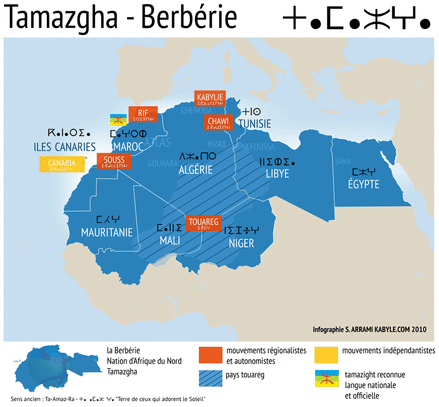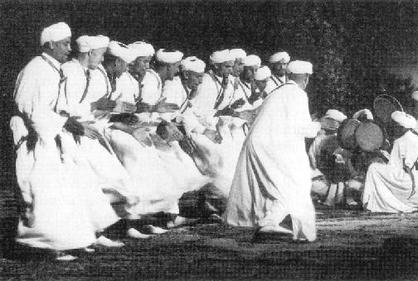History and Origins of Berber MusicThe Berber people have lived in North Africa since at least 3000 BC. As the indigenous people of Morocco, the Berbers have a long history of surviving conquest and occupation, by the Romans, Arabs, and French. The word "berber" stems from the Roman period, when the people of North Africa were viewed as barbarians. Today, the Berbers call themselves the Amazight, meaning "free people." In Morocco, Berbers today make up 40-45% of the population. They live mostly in remote areas of the Atlas mountains of Morocco. This isolation has contributed to the preservation of Berber musical traditions through the centuries.
Berber music has been passed down orally through the generations, and is thus known for its strong oral folk tradition. Although the origins of the Berbers are unknown, it is clear that music has been an essential part of Berber culture for thousands of years. Music is used during religious ceremonies and festivals, marriage ceremonies, seasonal festivals, and funerals and burials.
|
"The entire process of performance and creation rests with the community. The music not only springs from the community but is also the mainspring of that community. It owes its existence to the life of the community so its proper functioning is directly linked with the proper functioning of that community." - Bernard Lortat-Jacob, "Community Music as an Obstacle to Professionalism: A Berber Example"
The number of rwais (traveling groups of Berber musicians) has dramatically increased in the last century. Once rare, their numbers increased under the French protectorate, and as their ability to move around the country increased. During the French protectorate, some rwais became the equivalent of court musicians, but their socially critical music also sometimes resulted in their imprisonment.
In recent years, Berber music has been associated with the Berber Culture Movement, which advocates for recognition of the Berber culture within Arab society and fights against the stereotypes of Berbers as "backwards." Berber music has therefore become more politically and socially conscious in recent decades.
"Yet, then a personality had to be defined and thus the “Arab” world was attached to us, which is silly because I think someone who is Arab lives in Arabia, as there are people in Quebec, Canada, who speak French, but are not French. If I had never left my village I would never have learned a word in Arabic. We are, in fact, a Mediterranean country, a country with a Muslim, Christian, Jewish history, and ties between us all because of financial relationships. The Berber cause is not really a cause, because we were never gassed, massacred, it’s not that, but a movement against integration into the cultural envelope, against repression, which are the essential elements of a cause, and about which I sing in my songs." - Algerian Berber Singer Idir


